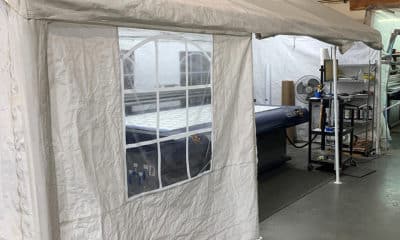MY WORK IS ALL ABOUT IMPROVING EFFICIENCY – processing and shipping more jobs faster. This generally requires change. However, change is inherently difficult.
In fact, many businesses tend to simply follow the lead of the past, as if previous leadership had it all figured out back in the day. In some cases, this makes a lot of sense. In others, the “tried and true” has already proven to be unsatisfactory, but continuing with routine seems a reasonable application of insanity.
This may seem laughable, but in truth, it is very common. Humans don’t like change, even if for the better, and even if it need not be drastic to make a significant impact. Going with what you know is a safer option. In the face of this human resistance, demonstrating how change could bring greater productivity, profitability, and efficiency can go a long way toward convincing the inherently skeptical.
For example, a while back I had a client doing large wall murals. They had an InDesign doc that was 3.5 GB and took forever to open. It was so big they had to crop it (tile) to send to print. At the RIP stage, it would take one or two hours to RIP each of these super-high-resolution tiles before printing.
I was there to teach color matching across several different printing technologies. However, I always spend time in prepress, because invariably there are some small changes that can have a big impact downstream. In this case, I used a different PDF template to export the PDF from InDesign. This resulted in a 50-Mb file from the 3.5-GB ID doc. I looked at them and said flatly, “I am not sure if this is going to work.”
The 50Mb file went quickly through the network to the RIP, the RIP processed the file in no time, and then started to print. I said, “Stop the press! We are printing the whole job!”
Advertisement
We cropped down 50Mb to the size the of the high resolution tile printed and reprinted cropped version. I then asked the receptionist from the front come back and look at the two prints side-by-side (high resolution tile and the 50Mb cropped file). She was really nervous — she looked hard and struggled to see differences, even on close inspection.
I looked at them and smiled — “That’s your answer.” They were sending way too much resolution for the printer resolution and viewing distance. Some slight changes in creating the PDF made a drastic change in production allowing more work to be printed.
In another example, a different client struggled to match their Epson proof on the web offset press. Matching the proof on the press required changes in both prepress and the pressroom, but one part of the problem was simple: the proofs being generated were for the wrong color reference print condition (CRPC). I corrected the problem and the pressman was able to actually hit color on press that matched reasonably close to the proof.
In the end, proofs were being created that the pressman could hit and not struggle to match because we addressed press calibration to a CRPC and targeted proofing to the same. These were not radical changes, but they nonetheless contributed to achieving the end result.
Sometimes small changes in way you do things can have large impacts on how jobs are processed (by the RIP). However, sometimes these changes are elusive because companies are not fully using the tools at their disposal, often because the staff doesn’t understand the potential benefits or how to achieve them. Having an expert help you take advantage of the tools at your disposal is a wise decision. Even a small change can reap large returns in terms of improving efficiency, reducing waste, and streamlining fulfillment.
 PHOTO: ISTOCKPHOTO
PHOTO: ISTOCKPHOTO

 VEHICLE WRAPS + GRAPHICS3 weeks ago
VEHICLE WRAPS + GRAPHICS3 weeks ago
 Press Releases3 weeks ago
Press Releases3 weeks ago
 Case Studies3 weeks ago
Case Studies3 weeks ago
 Case Studies1 week ago
Case Studies1 week ago
 Benchmarks3 weeks ago
Benchmarks3 weeks ago
 Press Releases2 months ago
Press Releases2 months ago
 Press Releases3 weeks ago
Press Releases3 weeks ago
 Press Releases2 months ago
Press Releases2 months ago


















